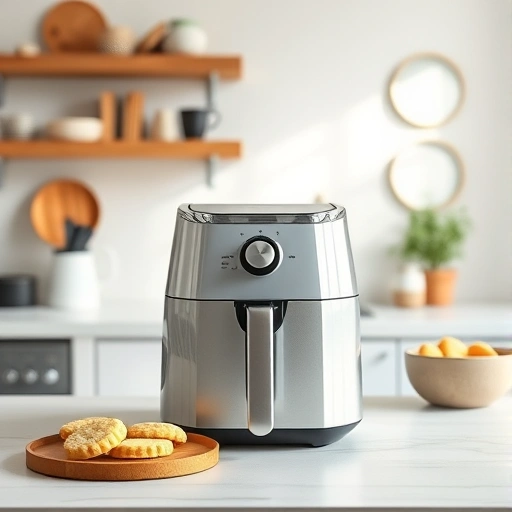
25g of self-raising flour equals approximately 0.88 ounces. This conversion is essential for air fryer baking, where precise measurements can make or break your recipe. Whether you're whipping up cakes, muffins, or bread, knowing how to convert grams to ounces ensures perfect results every time. At airfryerrecipe.co.uk, we understand the importance of accuracy, especially when working with self-raising flour’s unique properties.
Many UK recipes, especially those for air fryers, use grams, while some older cookbooks or international sources might list ingredients in ounces. Converting 25g of self-raising flour to ounces (0.88 oz) ensures you’re using the right amount for consistent texture and rise. Self-raising flour contains baking powder, so even small measurement errors can affect your bake’s fluffiness. For more air fryer-friendly conversions, check out our air fryer conversion chart.
Air fryers heat quickly and evenly, making them ideal for baking, but they’re less forgiving than conventional ovens. A slight excess of flour could lead to dry or dense results. That’s why we recommend using digital scales for grams-to-ounces conversions. If you’re adapting a family recipe or trying a new creation, precise measurements are your best friend.
For the most accurate 25g-to-ounces conversion, use a digital kitchen scale set to grams. Scoop the flour lightly into your measuring tool—don’t pack it down—and level it off with a knife. If you don’t have scales, the spoon-and-level method can work in a pinch: fluff the flour with a fork, spoon it into a measuring cup, and level it. Remember, 25g of self-raising flour is roughly 3 tablespoons or ¼ cup (before leveling).
One of the biggest mistakes is scooping flour directly from the bag with a measuring cup, which compacts it and leads to excess. For 25g of self-raising flour, this could mean accidentally using 30g or more, throwing off your recipe’s balance. Another pitfall is using cups or spoons meant for liquids—dry and wet measurements aren’t interchangeable. Always opt for nested dry measuring cups or scales for reliability.
Self-raising flour is a staple in many air fryer recipes, from air fryer cakes to quick breads. Its built-in leavening agent (usually 1-1.5 tsp baking powder per 100g flour) creates lift without needing extra ingredients. When converting 25g to ounces for these recipes, consistency matters—especially since air fryers circulate hot air, which can dry out batters faster than conventional ovens.
If you’re scaling a recipe up or down, our 25g-to-ounces conversion (0.88 oz) ensures you maintain the right flour-to-liquid ratio. For example, a small-batch air fryer Victoria sponge might call for 100g self-raising flour (3.5 oz), so 25g would be a quarter of that. Need inspiration? Browse our air fryer recipes for ideas that put your perfectly measured flour to good use.
If you only have plain flour, you can mimic self-raising by adding baking powder: for every 25g (0.88 oz) of plain flour, mix in ¼ tsp baking powder and a pinch of salt. Sift them together to distribute evenly. This hack is handy for air fryer emergencies, though store-bought self-raising flour tends to give more consistent results.
Just as 25g of self-raising flour equals 0.88 oz, other baking staples have straightforward conversions. For example, 25g of sugar is also roughly 0.88 oz, while 25g of butter converts to 0.88 oz (about 1¾ tbsp). Keeping a conversion chart handy simplifies adapting recipes for your air fryer. Remember, weight (grams/ounces) is more reliable than volume (cups/spoons) for baking.
Air fryers’ intense heat means batter and dough behave differently than in traditional ovens. Measuring by weight (like our 25g/0.88 oz flour example) eliminates variables like flour settling or sugar clumping. This precision is why professional bakers—and savvy home cooks—prefer scales. Plus, it saves washing up multiple measuring cups!